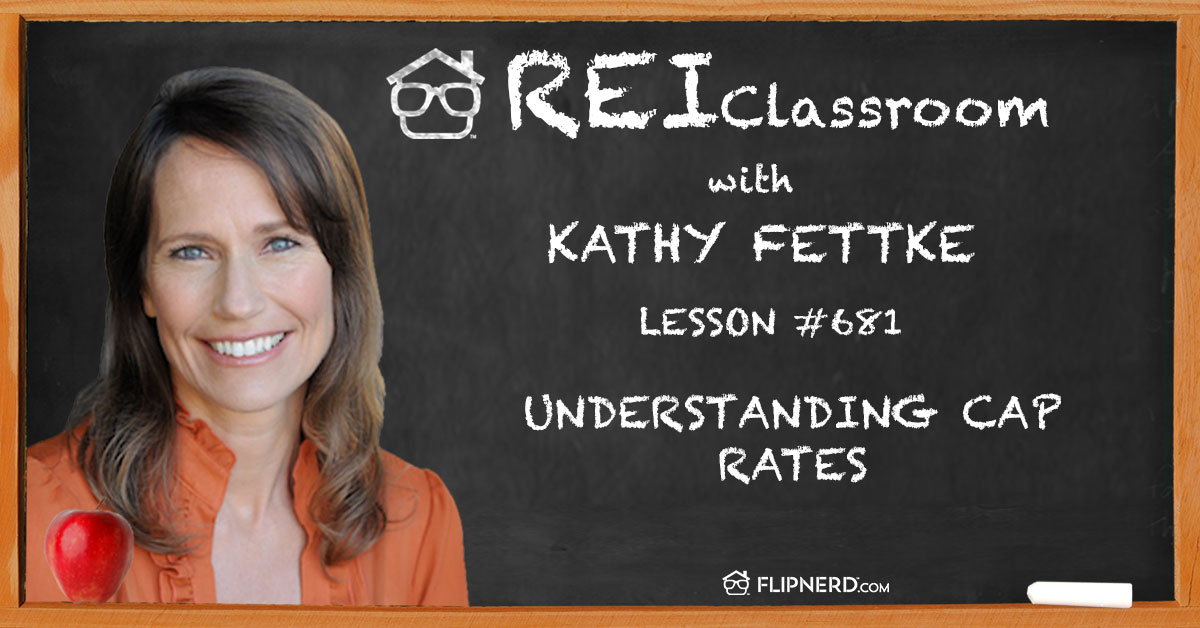Today’s REI Classroom Lesson
Lex Levinrad talks to us today about how to determine both material costs and labor costs for upcoming rehab projects.
REI Classroom Summary
Materials can be easy to calculate if you visit a local hardware store and write down costs for each item potentially needed, room-by-room. For labor costs, Lex explains the variations you’ll have depending on who you hire and how the general contractor bids usually have room for negotiation.
Listen to this REI Classroom Lesson
Real Estate Investing Classroom Show Transcripts:
Mike: Welcome back to the Flipnerd.com REI Classroom, where experts from across the real-estate investing industry teach you quick lessons to take your business to the next level. And now, let’s meet today’s expert host.
Lex: Hey everyone. Lex Levinrad over here. Welcome to today’s REI Classroom show. And we’re going to be talking about material costs and labor costs for rehabbing.
Mike: This REI Classroom real-estate lesson is sponsored by theinvestormachine.com, Flipnerd’s private investor coaching program and your blueprint to investing success.
Lex: Briefly, what I want to do is break this down into two components. The first one is understanding material costs and the second one is understanding labor costs. Now, of the two, materials are way easier because essentially everything you need to rehab a house you could find at your local home improvement store like a Home Depot or a Lowes. What I suggest you do, and I do this on all my boot camps with students, is take like a notepad or a yellow pad and go to Home Depot and go aisle by aisle. So, actually go through the aisles, looking at the different components. And what I want you to do is try to break it down by room.
So, let’s say for example, let’s start with a simple room like a bedroom. So the components for a bedroom, you’ve got your flooring which is either going to be a carpet, or a tile, or a laminate. You’ve got baseboards, paint, drywall, blinds, ceiling fan. There’s not a lot of components, right? Maybe you have a cupboard that it needs a bi-fold replaced. So now take those items and write them all down on a piece of paper or on your notepad and then go to Home Depot and then look up the cost of those items. You know, see what baseboard will cost you per linear foot, what the drywall would cost you, what a door would cost you, what a bi-fold would cost you and then do that throughout the rest of the house.
So, some of the more complicated that probably, the most complicated room is the kitchen so on the kitchen you break it down into cabinets. You’ve got base cabinets throughout the bottom then you got wall cabinets at the top. You got a sink. Typically on a rehab you’re going to be doing a double sink like a stainless steel double sink with faucets and then you have appliances. So, on the typical fix and flip that we do, brand new stainless appliances, a four pack, is $2,000. Cabinets, you can get some pretty decent cabinets at Home Depot for around $2,000. That’s for the base cabinets and also for the upper.
I recommend on fix and flips that you use granite and not Formica and that’ll run you probably around $35 a foot installed. And other than that, you’ve got your sink, you got your waterlines, you got your faucets. There’s not that many components, all right? So, as you go through a house, a lot of beginners might look at something like a hole in the drywall and think, “Wow, that’s a huge big problem.” But it isn’t. A piece of drywall that’s 8 by 4 costs about $10. So, having someone do the work to replace that is not such a big issue. So, understand the cost of materials because it is very important.
Let’s say if you’re going to tile a house and you want to buy off the shelf Home Depot 16 by 16 tile, that’s going to cost you around 70 cents a foot. You can usually, in most markets, find somebody to install that for around $1.80 a foot, so if you add the $1.80 and the 70 you’re about at $2.50 a foot. So, in a thousand square foot house, that would be $2,500 in tile. Now, that exercise you just did with the tile, you can do with every component on the house. So, if you look at a kitchen you can say, “Well the cabinets are going to be $2,000, appliances are going to be $2,000. Granite counter tops are going to cost another $1,000 or $1,500.” By the time you add it all up your kitchen might cost you $6,000. Bathrooms you can do for $1,500, $2,000 a bathroom.
So just go through them one by one and understand the components and the best way to do that is just go in a Home Depot and going aisle by aisle. You know a lot of things look like a big deal and you see a brand-new bath tub is $250. A brand-new shower door is $150. The tile that goes around the enclosure of a bathtub, you know, you’ve got each wall, if you look at it it’s not that much tile really. Right? So typically, it’s eight feet high and the tub starts at about three feet. So, you’ve got about five feet by eight by five feet so it’s not a lot of tile for the bathroom. And if you just do that room by room and you can add up your materials, then you’ll know what they cost. That’s really going to help you when you’re trying to fix a house, make sure you’re not getting ripped off.
Now, let’s talk a little about the other component. Outside of materials, the other component is labor costs. So, labor costs are a little bit more complex because it really depends on who you’re using. So, let’s start out at the top. Your licensed general contractor, the guy is doing real well, who is showing up to your job,in his nice Ford F350 truck. He’s going to typically figure out what the cost of the job will be for labor and materials using his subs. And he’s typically going to triple that amount when he gives you a quote. He’s going to leave himself a little bit of a room and he’ll take the job on at around double the amount. So, if he quotes you 45 on a job, it’s probably costing him 15.
So, your job as somebody who’s fixing houses is to understand the components of the labor and the materials. So once you’ve got the materials out of the way, you’ve got to try and figure out what those subs would cost. And the best way you can do that is just go on job sites, even your own jobs and seeing what these people make. Right? So, you might find your average day laborer who may or may not even be legally employed, you know, he might work for $60, $70, $80 a day. Once you go up to your more competent handyman, he might go at $120 or $150 a day. But a very competent guy, the kind of guy who will go to Home Depot, buy materials, and charge it on a commercial account and do the job, where you only have to check up on him maybe once a week, that typical guy is going to want around $200 a day.
So, the next component is understanding how long that job will take. So that’s just a brief primer on understanding material and labor cost. It’s not that difficult. The key is to just break it down.
Mike: Are you looking to change your life through real-estate investing? If you’re interested in either getting started or taking your business to the next level, please check out FlipNerd’s private program at theinvestormachine.com. This is the most robust real-estate investor coaching, networking, and mastermind on the planet and designed for your success.
If you’re ready to roll up your sleeves, ready to take personal responsibility for your own success and ready to dive into a world class instructional coaching program that provides you step by step instruction to help you achieve financial freedom, then you should apply today. Spaces are limited and candidates are only considered after an application and interview process. Our 12-month investor program is unparalleled. Think you might be a fit? Learn more today at theinvestormachine.com.
Please note the views and opinions expressed by the individuals in this program do not necessarily express those of Flipnerd.com or any of its partners, advertisers, or affiliates. Please consult professionals before making any investment or tax decisions, as real-estate investing can be risky.
Are you a member yet of Flipnerd.com, the hottest real-estate investing social community online? If not, you can join for free in less than 30 seconds and get access to hundreds of off market deals, vendors in your market to help you in your business and you can start networking with thousands of other investors just like you. Get your free account now at Flipnerd.com.
Please check out the FlipNerd family of real-estate investment shows where you can access hundreds of expert interviews, quick tips, and lessons from leaders across the real-estate investing industry. They’re available at flipnerd.com/shows or simply search for “FlipNerd” in the iTunes store.
Lex: Hey everyone. Lex Levinrad over here. Welcome to today’s REI Classroom show. And we’re going to be talking about material costs and labor costs for rehabbing.
Mike: This REI Classroom real-estate lesson is sponsored by theinvestormachine.com, Flipnerd’s private investor coaching program and your blueprint to investing success.
Lex: Briefly, what I want to do is break this down into two components. The first one is understanding material costs and the second one is understanding labor costs. Now, of the two, materials are way easier because essentially everything you need to rehab a house you could find at your local home improvement store like a Home Depot or a Lowes. What I suggest you do, and I do this on all my boot camps with students, is take like a notepad or a yellow pad and go to Home Depot and go aisle by aisle. So, actually go through the aisles, looking at the different components. And what I want you to do is try to break it down by room.
So, let’s say for example, let’s start with a simple room like a bedroom. So the components for a bedroom, you’ve got your flooring which is either going to be a carpet, or a tile, or a laminate. You’ve got baseboards, paint, drywall, blinds, ceiling fan. There’s not a lot of components, right? Maybe you have a cupboard that it needs a bi-fold replaced. So now take those items and write them all down on a piece of paper or on your notepad and then go to Home Depot and then look up the cost of those items. You know, see what baseboard will cost you per linear foot, what the drywall would cost you, what a door would cost you, what a bi-fold would cost you and then do that throughout the rest of the house.
So, some of the more complicated that probably, the most complicated room is the kitchen so on the kitchen you break it down into cabinets. You’ve got base cabinets throughout the bottom then you got wall cabinets at the top. You got a sink. Typically on a rehab you’re going to be doing a double sink like a stainless steel double sink with faucets and then you have appliances. So, on the typical fix and flip that we do, brand new stainless appliances, a four pack, is $2,000. Cabinets, you can get some pretty decent cabinets at Home Depot for around $2,000. That’s for the base cabinets and also for the upper.
I recommend on fix and flips that you use granite and not Formica and that’ll run you probably around $35 a foot installed. And other than that, you’ve got your sink, you got your waterlines, you got your faucets. There’s not that many components, all right? So, as you go through a house, a lot of beginners might look at something like a hole in the drywall and think, “Wow, that’s a huge big problem.” But it isn’t. A piece of drywall that’s 8 by 4 costs about $10. So, having someone do the work to replace that is not such a big issue. So, understand the cost of materials because it is very important.
Let’s say if you’re going to tile a house and you want to buy off the shelf Home Depot 16 by 16 tile, that’s going to cost you around 70 cents a foot. You can usually, in most markets, find somebody to install that for around $1.80 a foot, so if you add the $1.80 and the 70 you’re about at $2.50 a foot. So, in a thousand square foot house, that would be $2,500 in tile. Now, that exercise you just did with the tile, you can do with every component on the house. So, if you look at a kitchen you can say, “Well the cabinets are going to be $2,000, appliances are going to be $2,000. Granite counter tops are going to cost another $1,000 or $1,500.” By the time you add it all up your kitchen might cost you $6,000. Bathrooms you can do for $1,500, $2,000 a bathroom.
So just go through them one by one and understand the components and the best way to do that is just go in a Home Depot and going aisle by aisle. You know a lot of things look like a big deal and you see a brand-new bath tub is $250. A brand-new shower door is $150. The tile that goes around the enclosure of a bathtub, you know, you’ve got each wall, if you look at it it’s not that much tile really. Right? So typically, it’s eight feet high and the tub starts at about three feet. So, you’ve got about five feet by eight by five feet so it’s not a lot of tile for the bathroom. And if you just do that room by room and you can add up your materials, then you’ll know what they cost. That’s really going to help you when you’re trying to fix a house, make sure you’re not getting ripped off.
Now, let’s talk a little about the other component. Outside of materials, the other component is labor costs. So, labor costs are a little bit more complex because it really depends on who you’re using. So, let’s start out at the top. Your licensed general contractor, the guy is doing real well, who is showing up to your job,in his nice Ford F350 truck. He’s going to typically figure out what the cost of the job will be for labor and materials using his subs. And he’s typically going to triple that amount when he gives you a quote. He’s going to leave himself a little bit of a room and he’ll take the job on at around double the amount. So, if he quotes you 45 on a job, it’s probably costing him 15.
So, your job as somebody who’s fixing houses is to understand the components of the labor and the materials. So once you’ve got the materials out of the way, you’ve got to try and figure out what those subs would cost. And the best way you can do that is just go on job sites, even your own jobs and seeing what these people make. Right? So, you might find your average day laborer who may or may not even be legally employed, you know, he might work for $60, $70, $80 a day. Once you go up to your more competent handyman, he might go at $120 or $150 a day. But a very competent guy, the kind of guy who will go to Home Depot, buy materials, and charge it on a commercial account and do the job, where you only have to check up on him maybe once a week, that typical guy is going to want around $200 a day.
So, the next component is understanding how long that job will take. So that’s just a brief primer on understanding material and labor cost. It’s not that difficult. The key is to just break it down.
Mike: Are you looking to change your life through real-estate investing? If you’re interested in either getting started or taking your business to the next level, please check out FlipNerd’s private program at theinvestormachine.com. This is the most robust real-estate investor coaching, networking, and mastermind on the planet and designed for your success.
If you’re ready to roll up your sleeves, ready to take personal responsibility for your own success and ready to dive into a world class instructional coaching program that provides you step by step instruction to help you achieve financial freedom, then you should apply today. Spaces are limited and candidates are only considered after an application and interview process. Our 12-month investor program is unparalleled. Think you might be a fit? Learn more today at theinvestormachine.com.
Please note the views and opinions expressed by the individuals in this program do not necessarily express those of Flipnerd.com or any of its partners, advertisers, or affiliates. Please consult professionals before making any investment or tax decisions, as real-estate investing can be risky.
Are you a member yet of Flipnerd.com, the hottest real-estate investing social community online? If not, you can join for free in less than 30 seconds and get access to hundreds of off market deals, vendors in your market to help you in your business and you can start networking with thousands of other investors just like you. Get your free account now at Flipnerd.com.
Please check out the FlipNerd family of real-estate investment shows where you can access hundreds of expert interviews, quick tips, and lessons from leaders across the real-estate investing industry. They’re available at flipnerd.com/shows or simply search for “FlipNerd” in the iTunes store.










